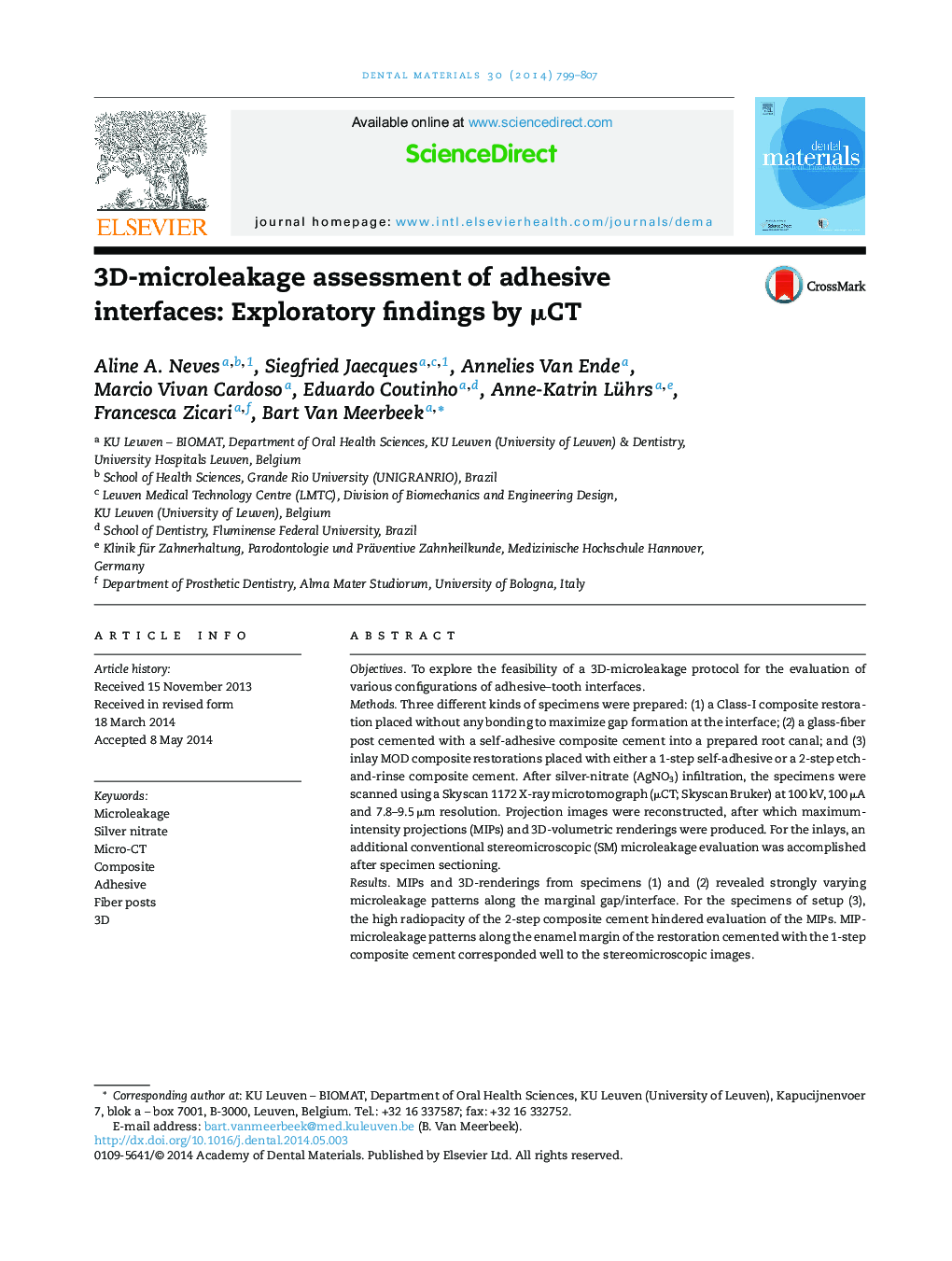| Article ID | Journal | Published Year | Pages | File Type |
|---|---|---|---|---|
| 1420816 | Dental Materials | 2014 | 9 Pages |
ObjectivesTo explore the feasibility of a 3D-microleakage protocol for the evaluation of various configurations of adhesive–tooth interfaces.MethodsThree different kinds of specimens were prepared: (1) a Class-I composite restoration placed without any bonding to maximize gap formation at the interface; (2) a glass-fiber post cemented with a self-adhesive composite cement into a prepared root canal; and (3) inlay MOD composite restorations placed with either a 1-step self-adhesive or a 2-step etch-and-rinse composite cement. After silver-nitrate (AgNO3) infiltration, the specimens were scanned using a Skyscan 1172 X-ray microtomograph (μCT; Skyscan Bruker) at 100 kV, 100 μA and 7.8–9.5 μm resolution. Projection images were reconstructed, after which maximum-intensity projections (MIPs) and 3D-volumetric renderings were produced. For the inlays, an additional conventional stereomicroscopic (SM) microleakage evaluation was accomplished after specimen sectioning.ResultsMIPs and 3D-renderings from specimens (1) and (2) revealed strongly varying microleakage patterns along the marginal gap/interface. For the specimens of setup (3), the high radiopacity of the 2-step composite cement hindered evaluation of the MIPs. MIP-microleakage patterns along the enamel margin of the restoration cemented with the 1-step composite cement corresponded well to the stereomicroscopic images.SignificanceThe reported μCT-protocol revealed good sensitivity to detect AgNO3 infiltration at the adhesive–tooth interface when considerable microleakage was present. When microleakage was less apparent and spread in a more diffuse pattern, evaluation with μCT was less sensitive compared to stereomicroscopic evaluation.
